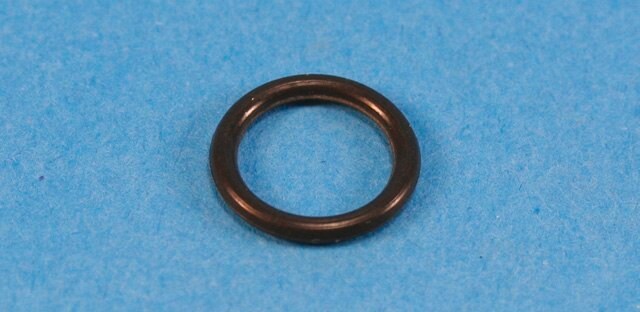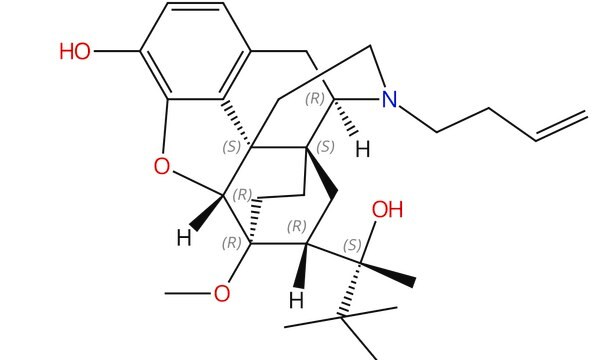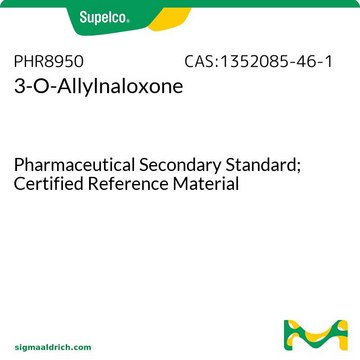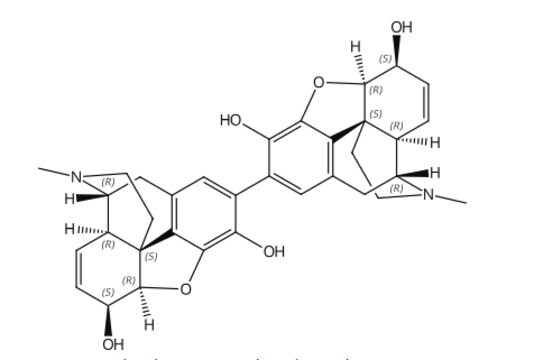Key Documents
IMPN-007-04
Naloxone N-oxide solution
100 μg/mL in acetonitrile: water (1:1), ampule of 1 mL, certified reference material, Cerilliant®
Synonim(y):
Naloxone N-oxide solution
About This Item
Polecane produkty
klasa czystości
certified reference material
Postać
liquid
Właściwości
Snap-N-Spike®/Snap-N-Shoot®
opakowanie
ampule of 1 mL
producent / nazwa handlowa
Cerilliant®
stężenie
100 μg/mL in acetonitrile: water (1:1)
metody
gas chromatography (GC): suitable
liquid chromatography (LC): suitable
Zastosowanie
forensics and toxicology
format
single component solution
temp. przechowywania
−20°C
ciąg SMILES
Oc1ccc2C[C@@H]3[C@]4(O)CCC(=O)[C@@H]5Oc1c2[C@]45CC[N@@+]3([O-])CC=C
InChI
1S/C19H21NO5/c1-2-8-20(24)9-7-18-15-11-3-4-12(21)16(15)25-17(18)13(22)5-6-19(18,23)14(20)10-11/h2-4,14,17,21,23H,1,5-10H2/t14-,17+,18+,19-,20?/m1/s1
Klucz InChI
GAUIBVINJLVYRY-QBFPIVRFSA-N
Opis ogólny
Zastosowanie
- Nociceptive Descending Inhibition Restoration: Naloxone N-oxide has been studied in the context of traumatic brain injury in rats, focusing on its role in restoring nociceptive descending inhibition through the periaqueductal gray. This application contributes to our understanding of opioid receptor antagonist research in the recovery of neurological functions (Irvine et al., 2024).
- Opioid Receptor Research: Research on Naloxone N-oxide involves exploring its interaction with opioid receptors, particularly in the context of stress-induced reinstatement of drug preferences. This underscores its importance in studies related to opioid receptor antagonist mechanisms in addiction and stress response (Nygard et al., 2016).
- Quantitative Biochemical Assays: The use of Naloxone N-oxide in liquid chromatography-tandem mass spectrometry assays exemplifies its role in the simultaneous quantification of buprenorphine, naloxone, and their metabolites. This is crucial for pharmacokinetic analysis and monitoring drug metabolism in clinical settings (Swortwood et al., 2016).
Informacje prawne
produkt powiązany
Hasło ostrzegawcze
Danger
Zwroty wskazujące rodzaj zagrożenia
Zwroty wskazujące środki ostrożności
Klasyfikacja zagrożeń
Acute Tox. 4 Oral - Eye Irrit. 2 - Flam. Liq. 2
Kod klasy składowania
3 - Flammable liquids
Klasa zagrożenia wodnego (WGK)
WGK 2
Temperatura zapłonu (°F)
55.4 °F - closed cup
Temperatura zapłonu (°C)
13 °C - closed cup
Certyfikaty analizy (CoA)
Poszukaj Certyfikaty analizy (CoA), wpisując numer partii/serii produktów. Numery serii i partii można znaleźć na etykiecie produktu po słowach „seria” lub „partia”.
Masz już ten produkt?
Dokumenty związane z niedawno zakupionymi produktami zostały zamieszczone w Bibliotece dokumentów.
Nasz zespół naukowców ma doświadczenie we wszystkich obszarach badań, w tym w naukach przyrodniczych, materiałoznawstwie, syntezie chemicznej, chromatografii, analityce i wielu innych dziedzinach.
Skontaktuj się z zespołem ds. pomocy technicznej










